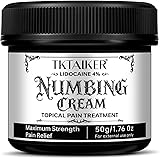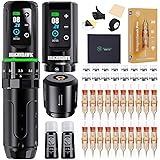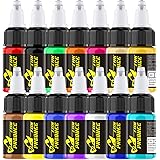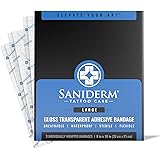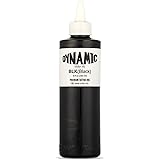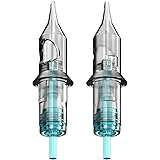Have you ever found yourself admiring a beautifully crafted piece of lettering, yet wishing it possessed an extra dimension? Many artists can relate to the desire for their flat designs to leap off the page, captivating viewers with a sense of depth and realism. The captivating visuals in the video above skillfully demonstrate how an illusion of 3D letters can transform ordinary typography into extraordinary art.
Mastering this technique allows artists to add incredible visual interest and professional polish to their work. Achieving this stunning 3D letter illusion is often considered a hallmark of advanced lettering skills. Thankfully, these effects are more accessible than one might initially think, requiring only a grasp of fundamental principles and consistent practice.
Understanding the Core of 3D Lettering
Three-dimensional lettering, or 3D lettering, involves creating an optical trick; the letters themselves remain on a two-dimensional surface, but they are rendered in such a way that they appear to have volume and depth. This effect is typically achieved by meticulously manipulating light, shadow, and perspective. The illusion of depth is carefully constructed through strategic visual cues, which are instinctively processed by the viewer’s brain.
Various methods are employed to give letters their perceived dimensionality. Each method offers a unique aesthetic and can be chosen based on the desired visual impact for the specific design. Consequently, understanding these foundational techniques becomes crucial for any aspiring 3D letter artist.
Essential Techniques for a 3D Letter Illusion
A few primary techniques form the bedrock of creating a convincing three-dimensional lettering effect. Each approach leverages different artistic principles to generate the illusion of depth. It is often recommended that artists become comfortable with each technique before combining them for more complex designs.
Extrusion: The Foundation of Solid Depth
Extrusion is perhaps the most straightforward method for making letters appear solid and thick. This technique involves extending lines from the edges of a flat letter into the background, creating the sides or ‘depth’ of the letterform. These extended lines are then connected to form a back plane, giving the letter a sense of physical thickness.
A consistent angle and length must be maintained for all extruded lines to ensure visual coherence. The choice of angle significantly impacts the perceived direction of the letter’s depth. This technique is frequently utilized in various graphic design applications and traditional hand lettering.
Drop Shadows: Creating a Floating Effect
Adding a drop shadow can give the impression that letters are lifted off the surface, casting a shadow behind them. This simple yet effective technique contributes significantly to the perception of depth and separation. A successful drop shadow relies on accurate placement and appropriate blurring.
The shadow’s position relative to the letter indicates the direction of the light source, thus influencing the overall illusion. Often, a slight offset and a subtle gradient in the shadow’s fill are implemented to enhance its realism. It is understood that the shadow should always appear behind the letter, reinforcing the foreground-background dynamic.
Perspective: Guiding the Eye to a Vanishing Point
Perspective drawing is a more advanced technique where letters recede towards a vanishing point on the horizon line. This method is incredibly powerful for creating a realistic sense of distance and scale. One-point, two-point, and even three-point perspective can be applied to letterforms, depending on the desired dramatic effect.
When perspective is used, all parallel lines on the letterforms appear to converge at a distant point. This convergence subtly manipulates how the viewer’s eye perceives the object’s depth in space. Consequently, objects closer to the viewer are drawn larger, while those further away are drawn smaller, creating an authentic sense of recession.
Isometric Projections: A Unique Angle of Depth
Isometric 3D lettering offers a distinct style where all lines of depth remain parallel, never converging towards a vanishing point. This creates a more geometric and uniform appearance, often associated with technical drawings and pixel art. There is an absence of foreshortening in isometric designs.
This method maintains the same scale for objects regardless of their perceived distance. Angles are typically drawn at 30, 90, and 150 degrees from the horizontal axis. Isometric three-dimensional lettering is favored for its clean lines and distinct, almost architectural, aesthetic, making it an excellent choice for a stylized look.
The Critical Role of Light and Shadow in 3D Lettering
The successful execution of any 3D letter illusion relies heavily on the intelligent application of light and shadow. Without these elements, letters can appear flat, despite the use of extrusion or perspective. Light defines the visible surfaces, while shadow creates the necessary contrast and depth.
A consistent light source must be established for the entire piece. This consistency dictates which planes of the letters are illuminated and which are cast into shadow. Highlights are typically placed on surfaces directly facing the light, while darker tones are applied to surfaces angled away or completely obscured. This careful interplay between illuminated and shaded areas is what truly brings the letters to life, making them appear robust and grounded in a three-dimensional space.
Choosing Your 3D Lettering Style
The aesthetic appeal of 3D lettering is vast, offering numerous styles to explore. Artists can opt for a soft, rounded, almost pillow-like effect, or a sharp, angular, architectural appearance. The chosen style often reflects the overall message or brand identity being conveyed by the typography. Some styles are inherently more playful, while others evoke a sense of strength or sophistication.
Consideration should be given to the context in which the lettering will be viewed. A whimsical birthday card might call for bubbly, inflated letters, whereas a corporate logo would likely benefit from clean, precise lines. Experimentation with different styles is highly encouraged to discover what resonates most with an individual’s artistic vision and purpose. Personal preference ultimately plays a significant role in style selection.
Tips for Practicing 3D Lettering
Consistent practice is undoubtedly key to mastering the art of 3D letter illusion. Beginning with simple letterforms, such as block letters, is often recommended for new learners. Gradually, more complex serifs and intricate flourishes can be introduced as confidence grows.
Utilizing a grid or guide lines can immensely help in maintaining consistency with angles and proportions. Regularly observing existing 3D typography in books, magazines, or online platforms can also provide valuable inspiration and insight into various techniques. Patience and persistence are qualities that will greatly assist in the development of these advanced lettering skills.


